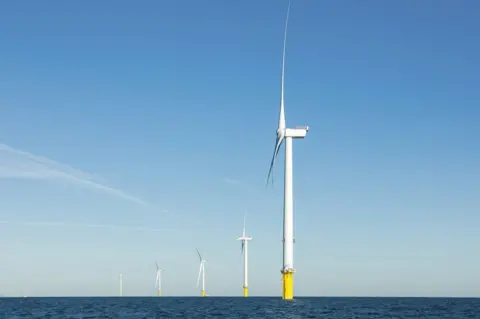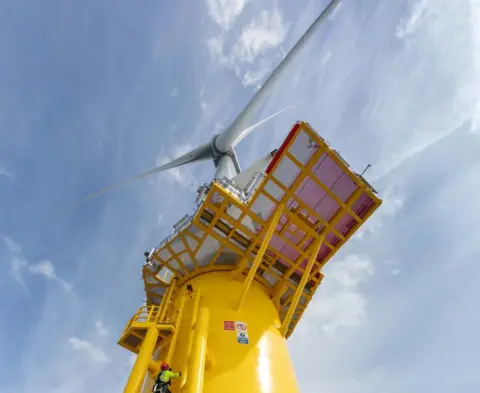Blyth offshore wind farm to use floating turbines
 EDF/Chris Henderson Photography
EDF/Chris Henderson PhotographyFloating turbines are planned for an offshore wind farm in one of the first projects of its kind in England.
The proposal would see the five turbines off the Northumberland coast at Blyth increased to 10.
Operator EDF Renewables said the project could more than double the site's energy capacity.
Director of offshore wind Michele Schiavone said the company wanted "to show that floating wind is technically feasible and cost competitive".
"We are confident that floating turbine technology can accelerate the UK's journey to a net zero future where clean energy powers all our lives," he said.
Floating turbines are cheaper than those which are fixed to the seabed and can be located further out to sea.
 EDF/Chris Henderson Photography
EDF/Chris Henderson PhotographyHywind, off the coast at Peterhead in Scotland, was the first commercial wind farm in the world to use floating turbines.
The first in Wales could be built by 2027 if granted the necessary approval.
EDF Renewables said a range of floating technology options were being considered for the new Blyth turbines and it hoped they would be fully operational by 2025.
Blyth's first five turbines, constructed in 2017, can generate 41.5 megawatts of power.
The company has consent to provide a maximum of 99.9 megawatts.
Blyth was the first UK offshore wind farm to use so-called "float and submerge" gravity-based foundations, where the foundation is floated into position and then sunk.

Follow BBC North East & Cumbria on Twitter, Facebook and Instagram. Send your story ideas to [email protected].
